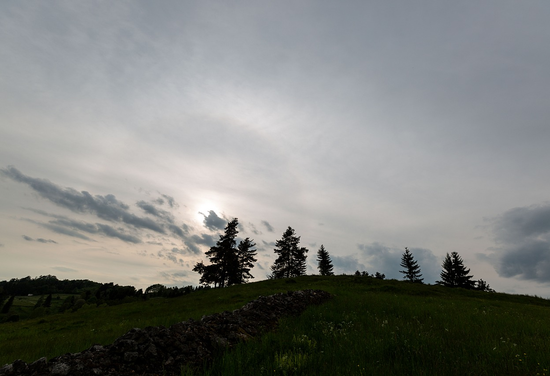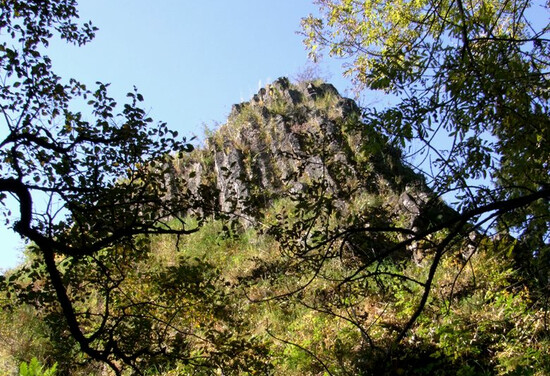- Physical difficulty: Moderately difficult
- Length: up to 150 min
- Refreshments: one´s own
- Wheelchair accessibility: No
Three Crosses near Prameny

The thtee crosses located on the right side of the road towards Nová Ves are probably the best-known and most renowned. You will find them on top of a rock stretching above the basin of the former town at 817 metres above sea level, with the well-known globe flower meadow spread around them.
Originally, a quarter of the town of Prameny (Sangerberg) called Větrný vršek ("the Windy Hill") was near the place but after it has been pulled down, the rock now stands alone among the vast meadows stretching in all directions. There are several legends about the origin of the crosses. The best-known story says local ill people had the three crosses built (sometimes it is said they were three brothers), as a thank you for recovery. Historical records or memories of contemporaries do not confirm this version at all. There is not a single record of this version and even the people who remember the times reject it completely as fake. Therefore, we can say and be quite sure that this interpretation is not based on the truth but that it is a newly fabricated story created by the new inhabitants after 1945.
The reason why the three crosses were built here is much simpler. The rock on which the Three Crosses stand, used to be called "am Stoinl". The crosses are placed on stone square bases, the middle one is bigger, the two side ones slightly smaller. It should be noted that the citizens of Prameny have always been very religious and since they were very rich as well, they often had crucifixion columns, crosses and chapels built on surrounding rocks or in the town. This was the situation with Three Crosses as well. They were built jointly by Sangerberg citizens in 1849 (not in 1859 as is often wrongly stated). They built their joint work here because the place is a prominent rock elevation close to the village, where they were used to placing religious symbols (e.g. on Peter´s Stone, etc.). The work on the crosses was done by several masters together, not just one.


